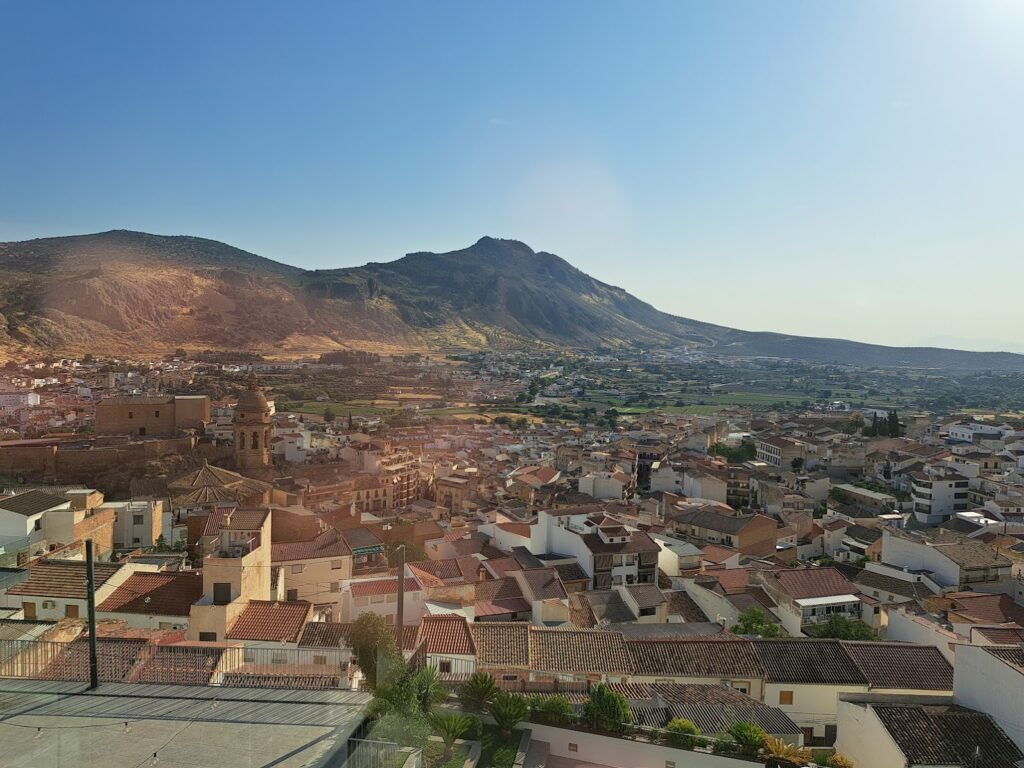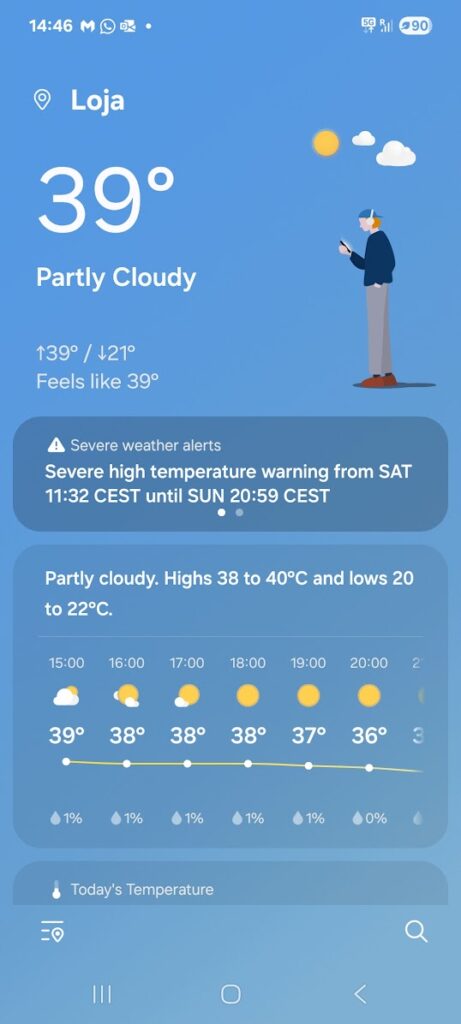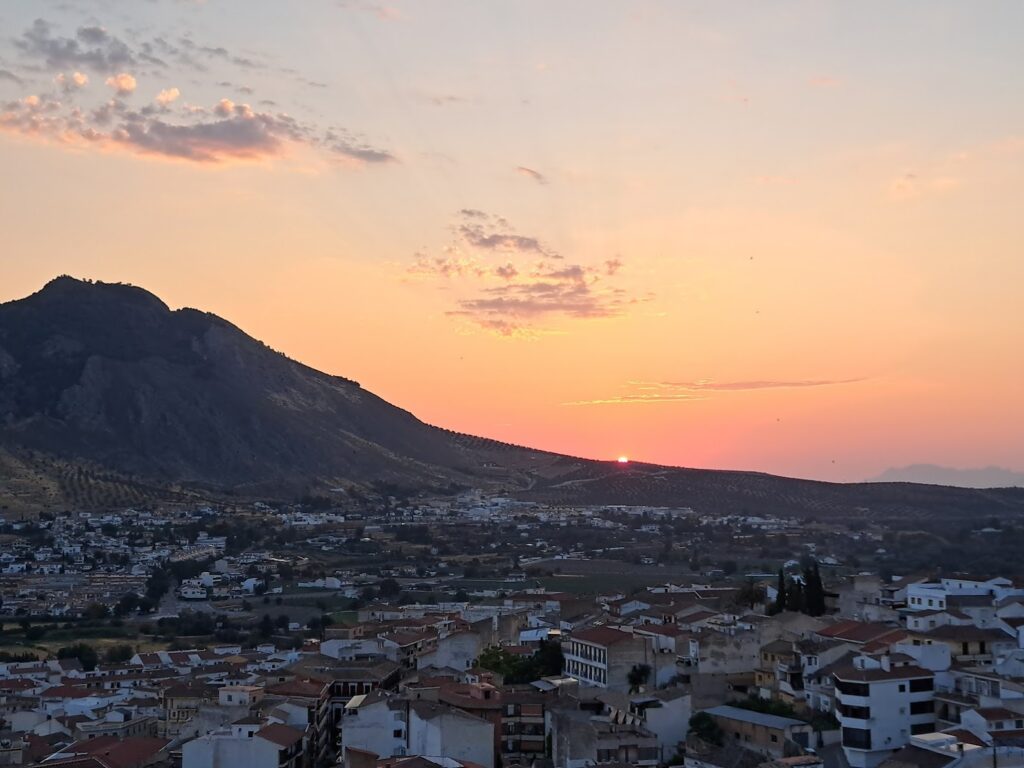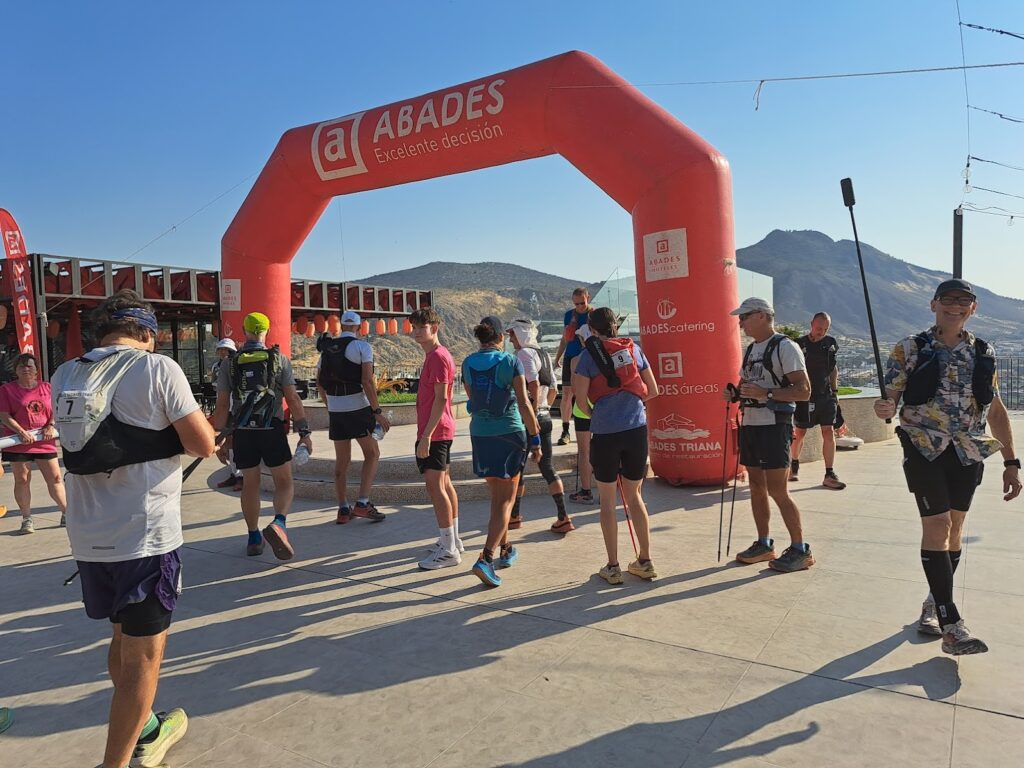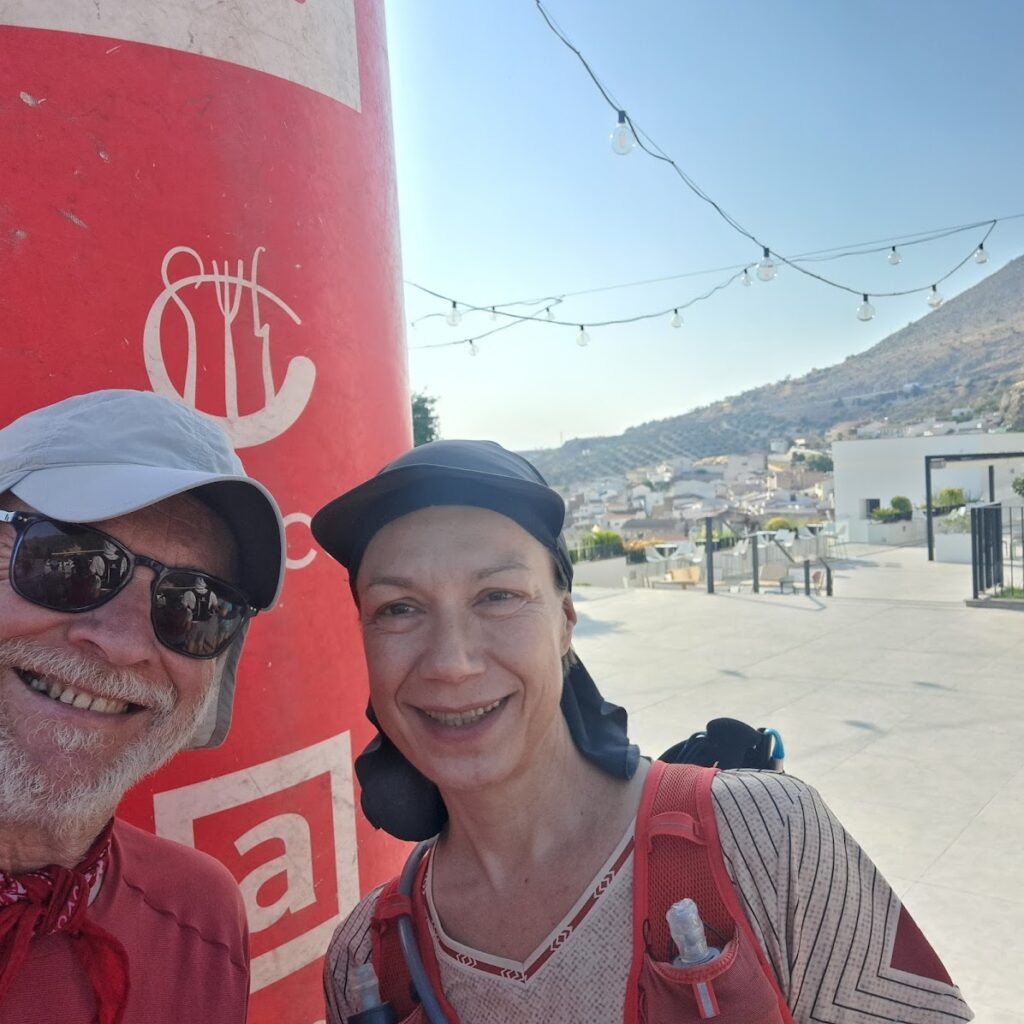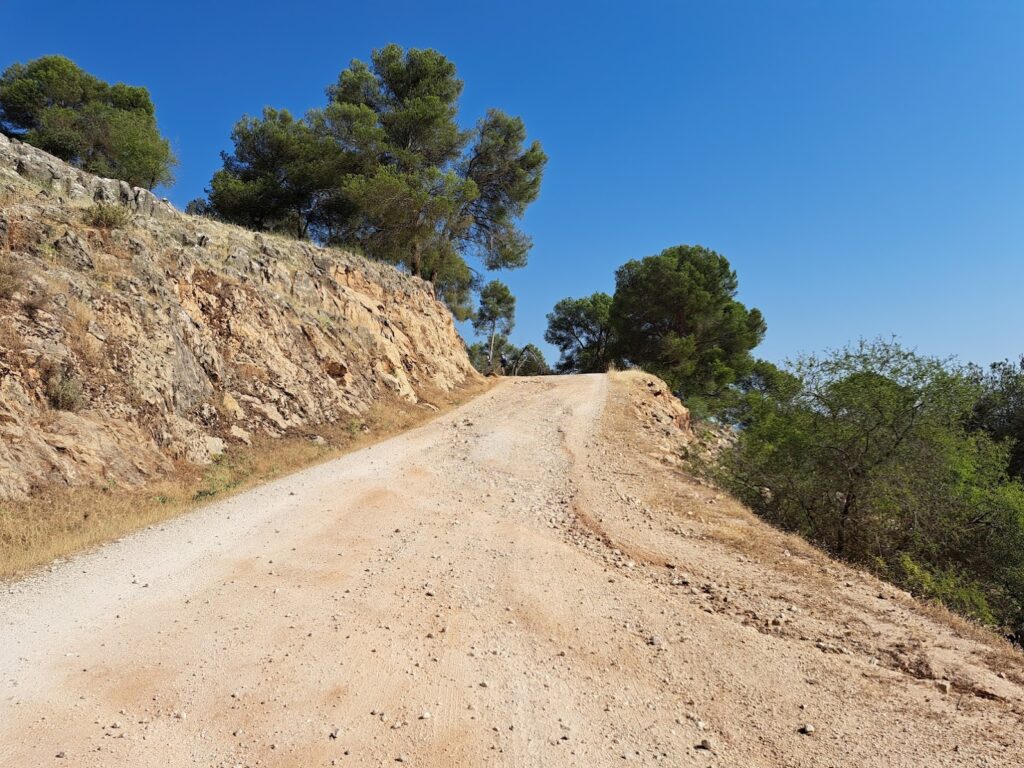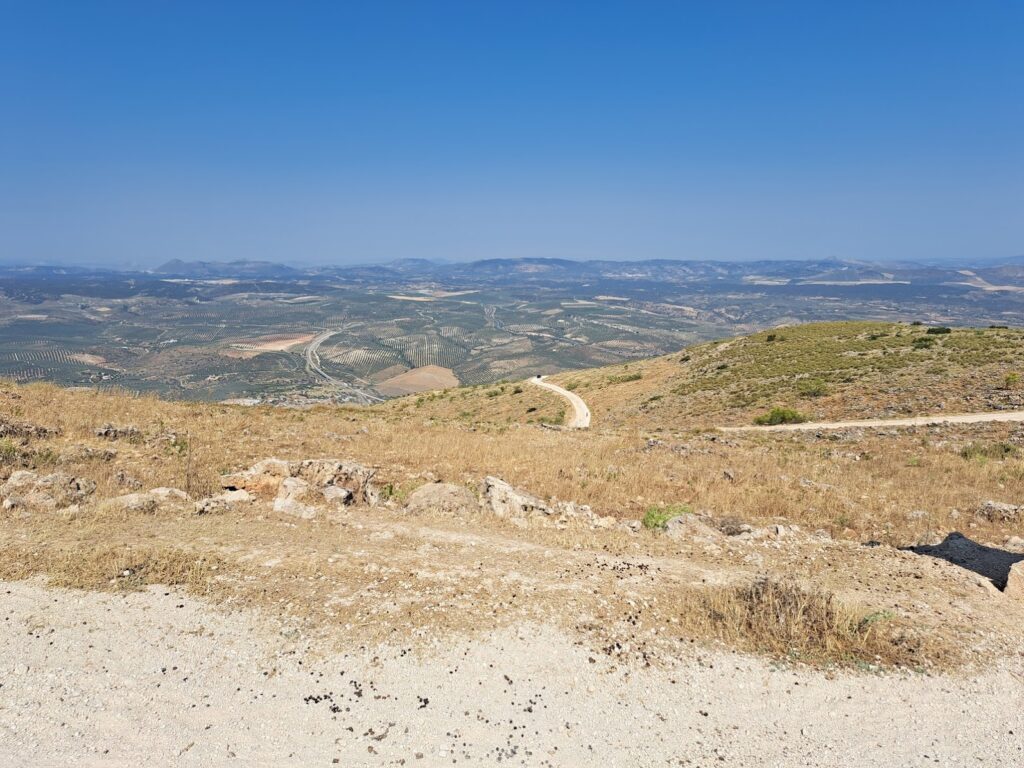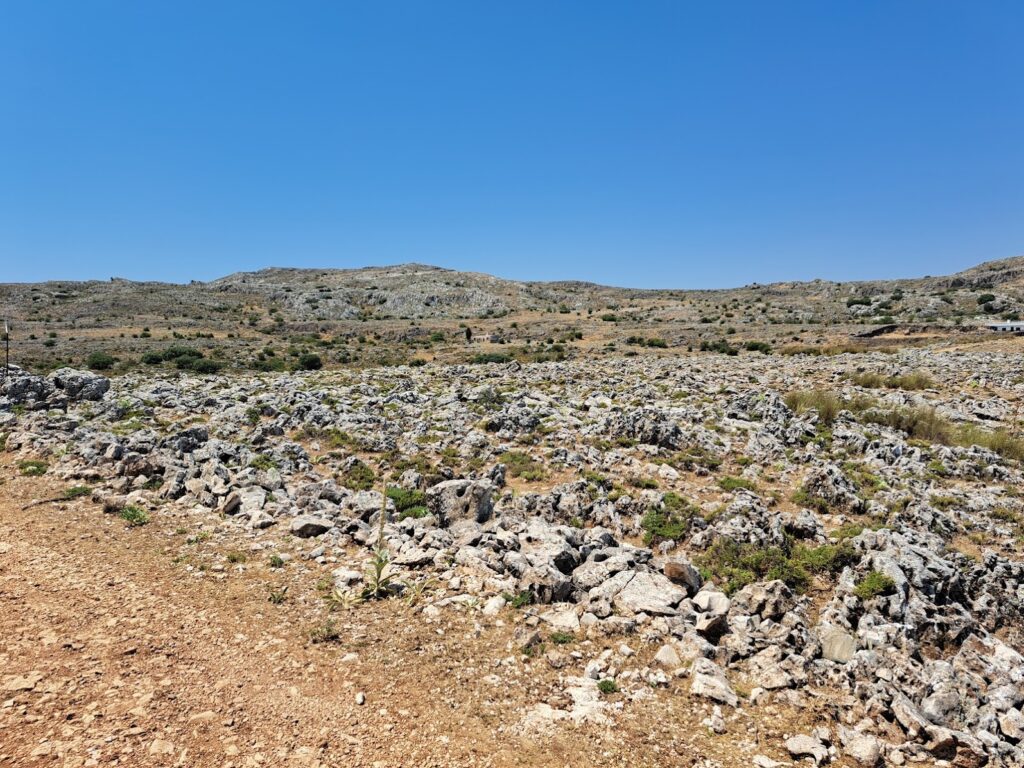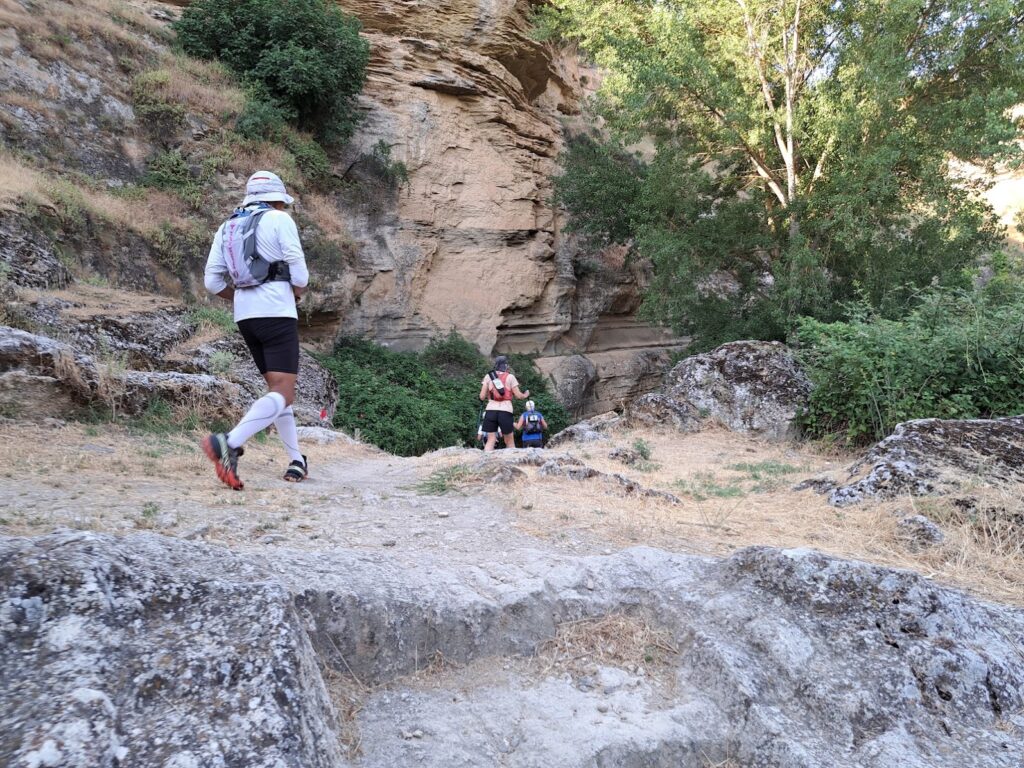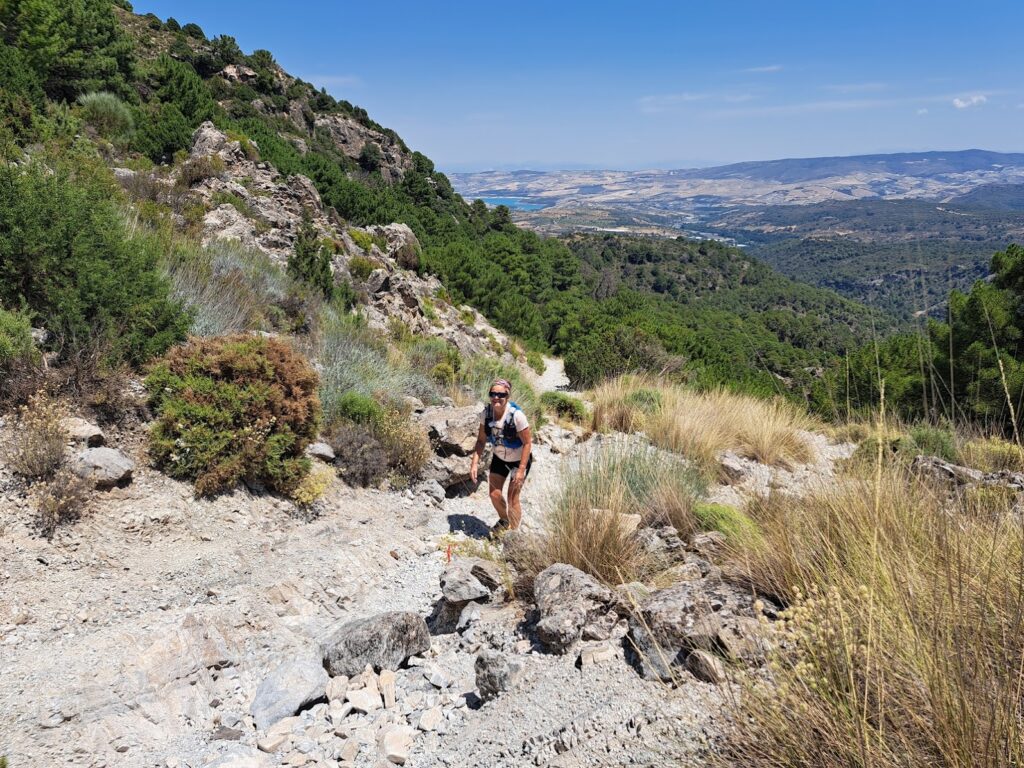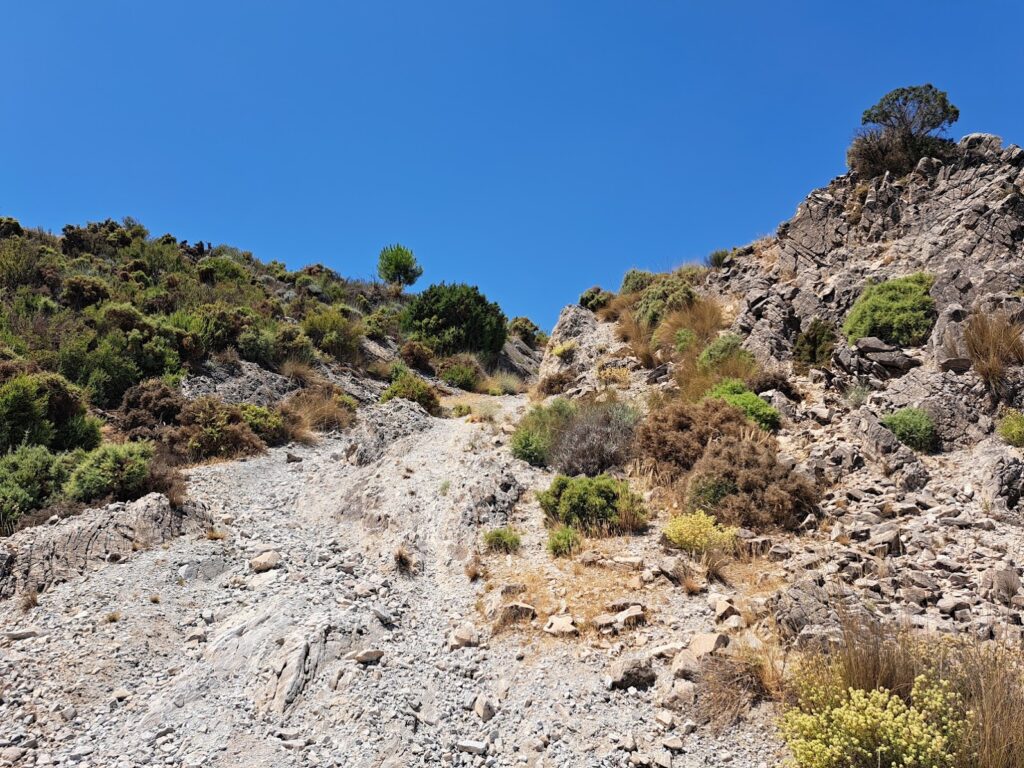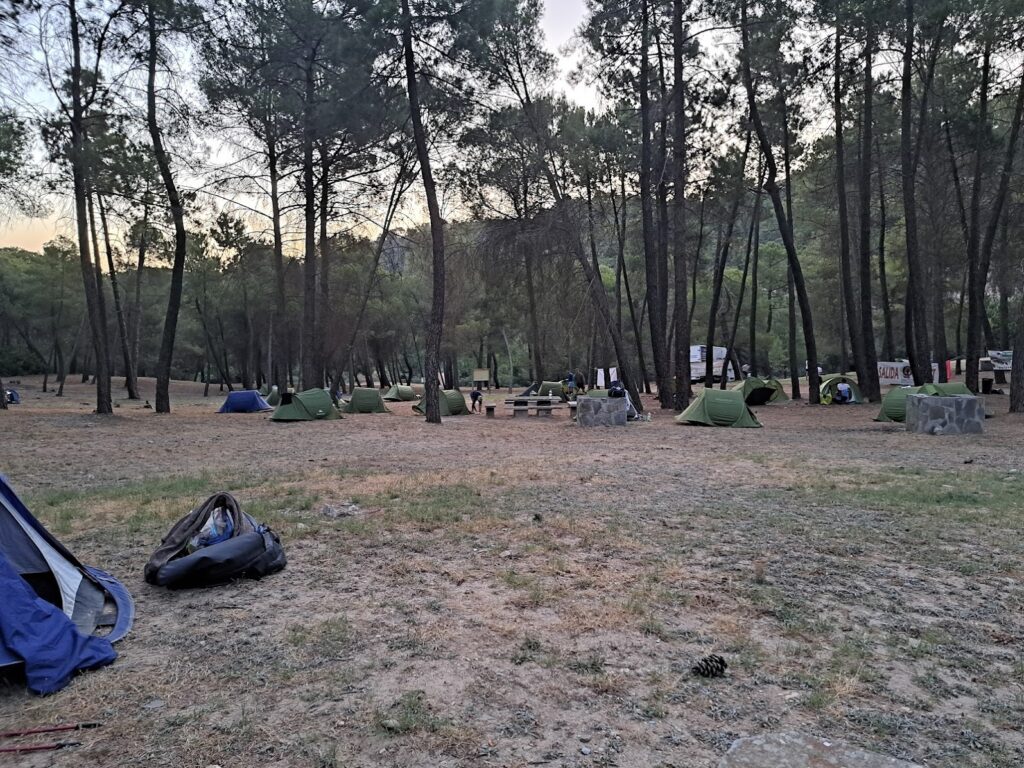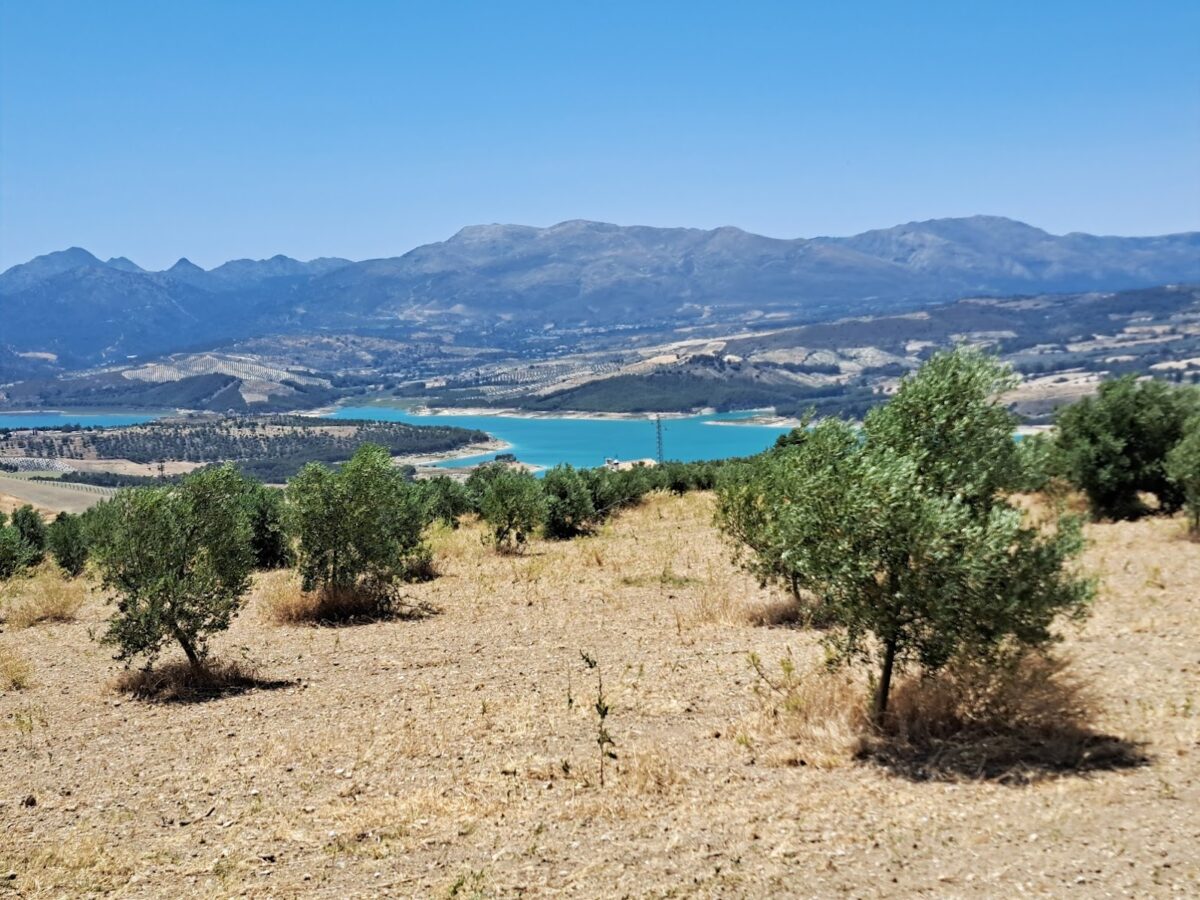Last week, I took part in a great event, the Al Andalus Ultimate Trail, a five-day stage race in Andalusia, Spain. I knew it was going to be hard, and it turned out that way. I did not meet my main goal of completing the whole race, but I did run almost a marathon a day for four days, in temperatures that reached between 38 °C and 40 °C each day, climbing an average of 1080 metres, on rugged trails, often on exposed slopes with no shade from the sun.
The adventure
The adventure started on Saturday, 28 June, with trains to Gatwick, a flight to Malaga, and a transfer to Loja, and finally checking in at the Mirador Hotel (where we start and finish the race). On Sunday, I had a brief run (to keep the streak going), registered for the race, and strolled around town to buy snacks for the race and get accustomed to the temperature. The temperature on Sunday was a consistent 39 °C, and I was reminded that the sun would be a significant factor in the race.
On Sunday evening, we had the race briefing followed by a get-to-know-you dinner. This event is small; this year, there were 34 starters, which means you get to know everybody. Some of the runners I knew from 2023, the previous time I took part in this race (read about that adventure here). 21 of this year’s runners had run the race before, many of them several times, a good indicator of how much people like this race..
Monday, 38km, 1261metres climb, 40C max heat
On Monday morning, we assembled in front of the hotel to begin our day. The race starts with a 13km climb, 900 metres, without any shade, a good introduction to the days to follow. Two years ago, I developed blisters on the sole of both of my heels, and I suspected that part of the reason was caused by the rockiness of the trail and the way I put my foot down. This time, I focused on making my foot plant as secure as possible and minimising skidding on the loose material. Over the first 3 or 4 km, my steady approach to the weather and the foot plant issue meant I was in last place. However, from about 5km, I started catching up with some of the other steadier runners.
There are checkpoints about every 10 km on this race. The checkpoints provide an opportunity to refill water bottles, drink isotonic drinks, and stock up on ice. I run with a neckerchief, and I tend to wrap an ice cube in my neckerchief at each checkpoint. On days when I wore a long-sleeved shirt (as opposed to a running t-shirt), I also put ice cubes in my two breast pockets.
The first day went OK, and I finished in just over 7 hours, about 20 minutes inside the cut-off. At the finish, we were introduced to our tents for the week and reunited with our drop bag. Each morning, we left the tent and drop bag when we started running, and the fantastic volunteers delivered them back to us at the next destination.
The bad news was one of my heels had already developed a hot spot, despite my delicate foot planting. This meant I had my first session with the medics, who put a doughnut dressing on my heel.
The evening was spent chatting with other runners, volunteers and member fo the medic team (three doctors Jonny, Dave and Arthur had signed up for the week and provided fantastic support).
Tuesday, 48 km, 1474 metres climb, 39 °C max heat
On Tuesday, we had a longer day, with some technical ascents and descents. I enjoyed the day, but I could feel my heels getting worse. At one of the checkpoints, one of the medics added a doughnut pad to my other heel. As the heels worsened, the speed decreased, and it took me 9 hours and 29 minutes to finish the route, just inside the time cutoff.
In the evening the medics had a big job to do on both heels as the blisters were getting bigger on both heels. Lots of popping, draining, and dressing.
Wednesday, 38 km, 837 metres of climb, 40C max heat
The slower runners started 30 minutes earlier than the other runners on the last three days, to make the cutoffs a bit easier. I was doing okay until about 8,000 meters from the end when the burning sensation in my left heel told me a blister had burst. This reduced my speed to a hobble for about an hour, after which the pain returned to a dull ache that is bearable. I finished in 7 hours 8 minutes, which was comfortably inside the time limit. The medics once again worked their magic, popping, cleaning, and dressing my feet.
Thursday 29 km, 746 metres of climb, 38 C max heat
Thursday should have been 59 km 😊 However, my painful feet meant I was travelling too slowly. Checkpoint 2 was where I was timed out two years ago (because of moving too slowly with painful feet). This year, I was slightly too late reaching Checkpoint 2, but Eric (the Race Director) gave me the option to press on and an extension to the finish time. I was very grateful and pressed on up an enormous hill, without any shade and reached checkpoint 3. However, at this point, my Garmin watch predicted I would be ridiculously late, so I called it a day and took a ride to the finish.
Friday, DNS
DNS stands for did not start. I woke up Friday morning to intense pain, and the entire base of my left heel was a large, single blister. I decided not to start and got a lift back to the finish, which was the Mirador Hotel. Just before dinner, I managed a super painful 3 km along the road outside the hotel to keep the streak going.
Friday evening was a grand dinner with the runners, the race team, the doctors, and the volunteers, and it was a great evening.
It was a great week
I did not manage to achieve my A goal – finishing the race. But the people and scenery were great. I pushed myself as hard as I could; I ran 152 km in 4 days, over rocky trails, in temperatures ranging from about 36C to 40C, climbing over 4000 metres. I am happy to have achieved that.
Dealing with the heat
This was my second time running in temperatures in the high 30s, and, except for the heels, I was pretty pleased with how I coped. The three significant issues are hydration, sunburn, and overheating (e.g., heat exhaustion). Since we would be running for 6 to 9 hours most days, nutrition is also a big issue, as it would be for running that long on cooler days.
Hydration means drinking lots of fluids, including isotonic drinks to replace the water and salt lost through sweating. I coped well with the water and the isotonic drinks. Some of the runners found the isotonic drinks tended to upset their stomachs and caused nausea. For many, the need to eat food during the run compounded the problem. I was able to carry enough water to get me comfortably between the checkpoints, and my mix of nuts, dried fruit, and muesli bars worked well for me.
The sun was fierce. Because we usually had no shade, no pollution, and often being more than 1000 metres above sea level, the UV levels from the sun were really high. Like most of the runners, I wore a hat with a peak and a flap that covered the sides of my head and the nape of my neck. On two days, I wore a running t-shirt with sun cream on my arms, and on two other days, I wore a shirt with long sleeves and a very light material. All exposed services were regularly covered in sun cream.
In terms of handling the heat the two forces are not generating too much heat and cooling down. The main option for not generating heat is not to run too hard, which I judge by my heart rate. Over the four days, my heart rate averaged about 110 beats a minute. The primary method of cooling down is through sweat and evaporation, which means drinking plenty. I was drinking more than 10 litres a day.
Dead Man Running
All the runners on the race were interesting people and most of them were really good company. You do not get to be a participant in this sort of race without having something interesting about you. But I want to highlight one of the runners Kevin Webber.
In 2014, at 49 years old, Kevin was diagnosed with Stage 4 Terminal Prostate Cancer and given two years to live. He has since run a fantastic range of ultra races, become an advocate for living your best life, and done his best to find out ways to improve his odds. You can read his book via Amazon.
You can check out an interview with Kevin by clicking here.
Kevin is now 60, and he completed the Al Andalus race well – he is an inspiration and a thought-provoker for all of us. BTW, he also hosts speaking events, so don’t hesitate to get in touch with him if your company or organisation is looking for something special.
DONATE! You can donate to Kevin’s Prostate Cancer fundraising page by clicking here.
Would I run it again?
Yes, if I can work out how to avoid the blisters. I run many ultras, and I have only experienced prominent heel blisters twice, both of which were during this race. My theory about foot placement did not work, so I need to find out how to avoid heel blisters before I try this race again.
You can run it too – and the super discount is available now
The registration for next year’s race is open, and there is a big discount if you sign up before the end of August. Visit the Al Andalus site to find out more.
